Paris is made for the flaneur but I alas am not a very good flaneur. Aimless wandering is just not it for twitchy me. I like the metro rather than the buses, because it is fast. When setting forth I like to be going somewhere. Back when I backpacked in the Pacific Northwest, my trips were never ‘hike the ridge trail’ but rather ‘hike up to Lake Rachel, make camp and fish for trout.’ I need a destination. And yet Paris is a marvelous city to just stroll and take in the beauty of the parks, buildings, and hidden treasures.
I solve this personal problem by having a goal for what could be aimless wandering. For example, we have purposefully gone to the end of metro lines to see what was there. For our adventures exploring the ends of line 3 see
We have also gone to free concerts, often in churches in various parts of the city and then explored the area.
Little known but interesting churches have proved to be promising targets for our wandering and here I am going to share some of my favorite destinations: St. Odile in the 17th; Notre Dame de l’Arche d’Alliance (our Lady of the Ark of the Covenant) in the 15th; Notre Dame de Lorette in the 9th ; Lazarist Mission Chapel of St. Vincent de Paul and Chapel of St. Catherine Labourde, both in the 10th; Etienne du Mont in the 5th; Chapelle Notre-Dame de Compassion in the 17th;
Saint Odile. Saint Odile became a goal as I was out walking around the neighborhood near Malesherbes metro where we were renting an apartment. I was going to find Sarah Bernhardt’s mice; the mice are about all that is left of her original apartment at 35 Rue Fortuny.
I noticed an interesting looking tower not far in the distance and decided I would make that my goal for the walk that afternoon. It looked to be just a few blocks away — after a mile and a half of wandering later, often losing sight of the tower which required backtracking and peering between buildings, I finally found the place, St. Odile.

The tower of St. Odile is the tallest church steeple in Paris.
They were having a service, so I could only grab a quick shot from the entry.
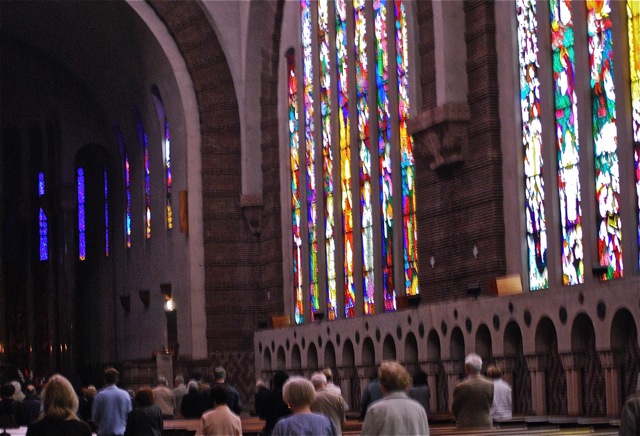
St. Odile was begun in the 1930s as part of many church building projects at this time designed to bring religion to the riff raff at the edges of Paris and to provide work for laborers who were experiencing hard times of the depression. It is just inside the peripherique in the 17th arrondissement. It is a stunning building with noteworthy stained glass and an interesting entry that makes use of the cast concrete technology to create lovely curved forms. The closest metro is Porte de Champerret.

Notre Dame de-l’Arche de Alliance. (Our Lady of the Ark of the Covenant) Another little visited modern treasure is Notre Dame de-l’ Arche de Alliance located not far from Gare Montparnasse in the 15th arrondissement. I saw a snapshot of this church on line when helping a friend locate something in the neighborhood on google maps and thought it looked interesting.
We started at Gare Montparnasse and reached the church walking through neighborhoods of modern apartment buildings.
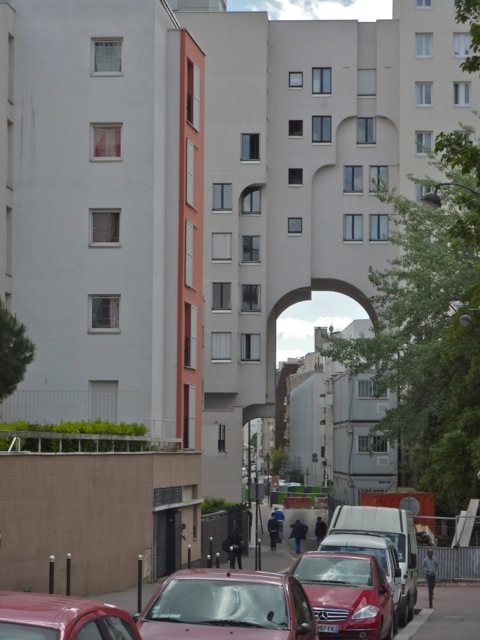 These cyclists are on the street right outside the entrance to the church at81 Rue d’Alleray.
These cyclists are on the street right outside the entrance to the church at81 Rue d’Alleray.
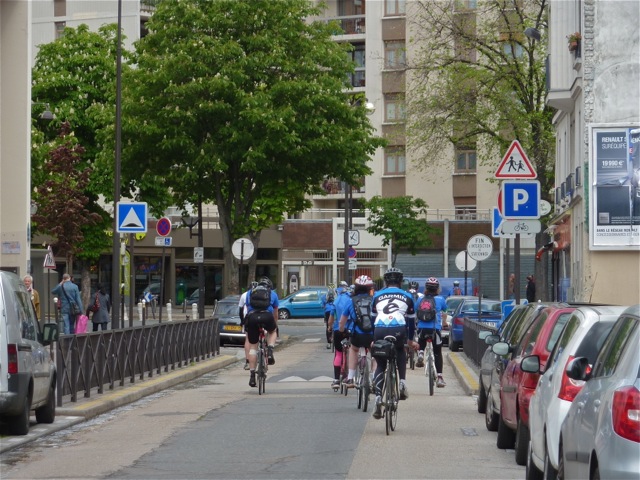 Even at first glance this building is arresting. Built as an 18 meter cube within a wire net, it looks a bit like an old fashioned jungle gym.
Even at first glance this building is arresting. Built as an 18 meter cube within a wire net, it looks a bit like an old fashioned jungle gym.
This is a modern church only completed in 2001. It was designed and build by the then Archbishop of Paris Cardinal Lustiger, who was a Jew who converted in his youth to Catholicism. His mother died at Auschwitz; he and his sister were shielded by priests in France and survived the war and he entered the priesthood. Although rising to a cardinal within the church, he considered himself a Jew and saw Christianity and Judaism as having continuity. This church echoes old and new testament themes with the double sense of the ark of the covenant: the ark of Moses and also Mary as the ark of the Christian covenant.
Although the sanctuary seems small, it can seat 350 people in its balconies and main floor.
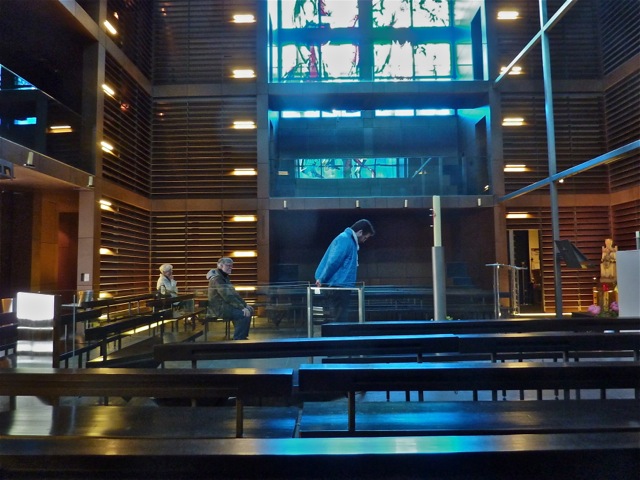 The double theme of the arks is expressed through stained glass windows. One depicts David dancing before the Ark of the Covenant.
The double theme of the arks is expressed through stained glass windows. One depicts David dancing before the Ark of the Covenant.
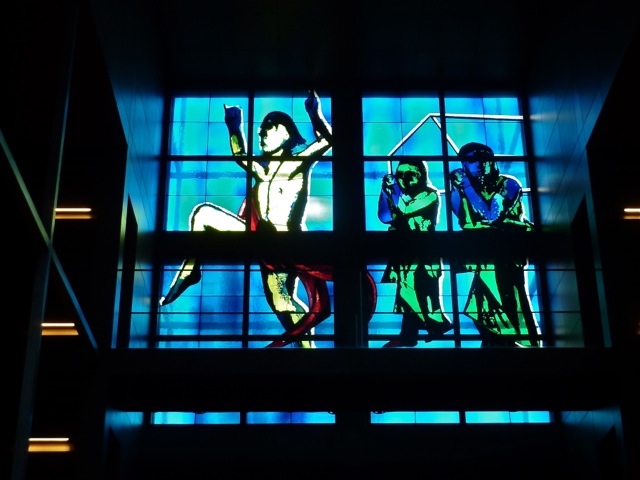 The glass on the other side of the sanctuary depicts the visitation of Mary to Elizabeth when John the Baptist leapt in her womb in recognition of the Lord to come carried by Mary.
The glass on the other side of the sanctuary depicts the visitation of Mary to Elizabeth when John the Baptist leapt in her womb in recognition of the Lord to come carried by Mary.
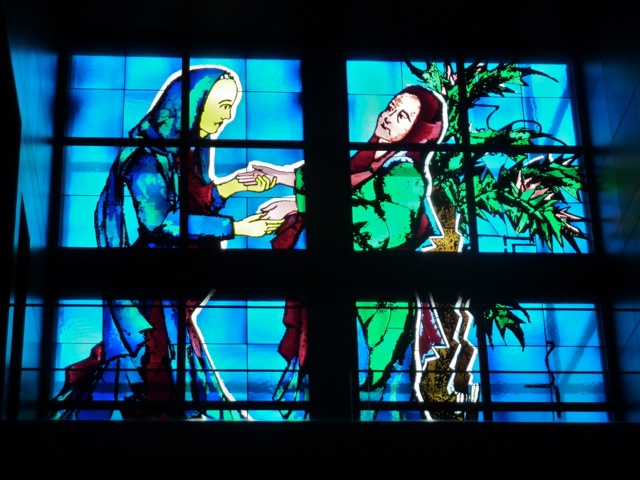 The geometric forms of the building allow the theme of crosses to be integral to the construction. The altar of white marble sits below a cross that is projected on the wall with a projector in the choir loft.
The geometric forms of the building allow the theme of crosses to be integral to the construction. The altar of white marble sits below a cross that is projected on the wall with a projector in the choir loft.
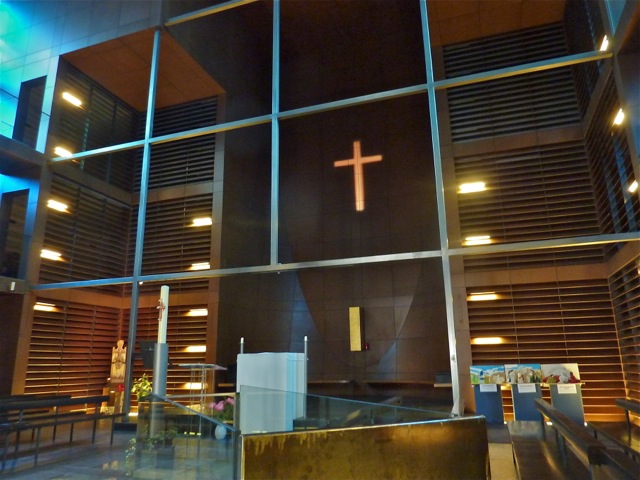 The ceiling includes an oculus which admits light into the space and the baptistry is visible through glass tiles on the floor.
The ceiling includes an oculus which admits light into the space and the baptistry is visible through glass tiles on the floor.
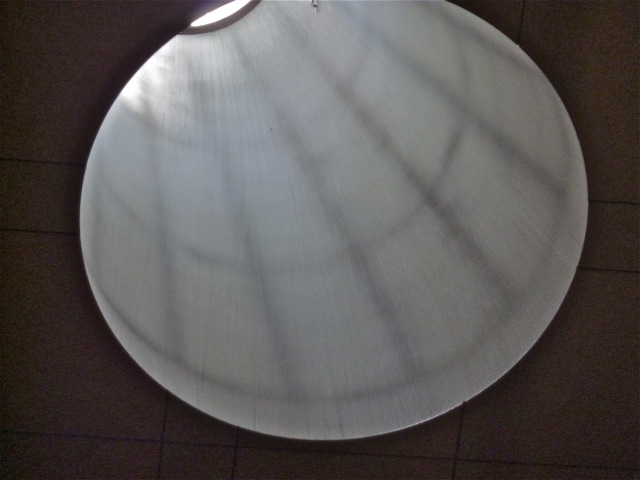 The church sits on stilts above park and play space for the neighborhood and even on the cool gloomy November day of our visit, there were children enjoying the playground.
The church sits on stilts above park and play space for the neighborhood and even on the cool gloomy November day of our visit, there were children enjoying the playground.

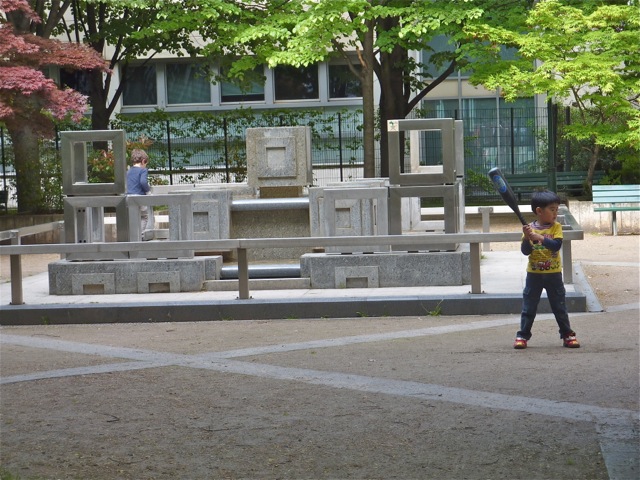 Here is a view from the back of the church where the building rises above a hedge of flowers.
Here is a view from the back of the church where the building rises above a hedge of flowers. 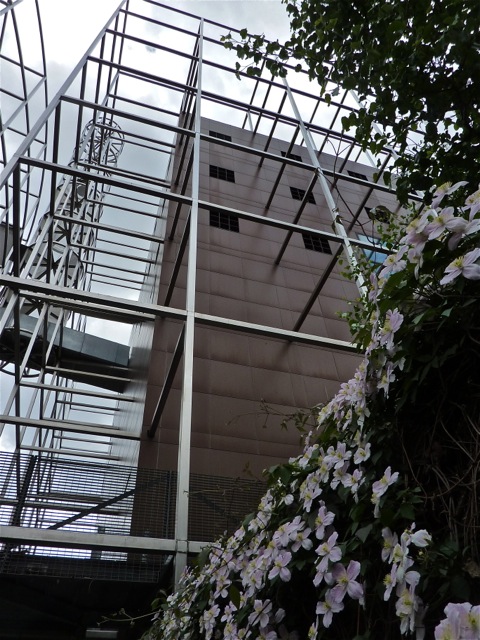
 So many of the more modern churches we have visited in Paris lack character; the Arche de-l’Alliance is an exception. It is a thrilling and compelling space.
So many of the more modern churches we have visited in Paris lack character; the Arche de-l’Alliance is an exception. It is a thrilling and compelling space.
Notre Dame de Lorette. Notre Dame de Lorette in the 9th near the metro stop that bears its name is a neoclassic church built during the early 19th century. It was built on the site of a similarly named church destroyed during the revolution and finished during the reign of the last King of the French Louis-Philipe.
Like many monumental churches in French towns and cities, Notre Dame de Lorette is jammed into a crowded space that makes it hard to enjoy the heroic lines of the architecture.
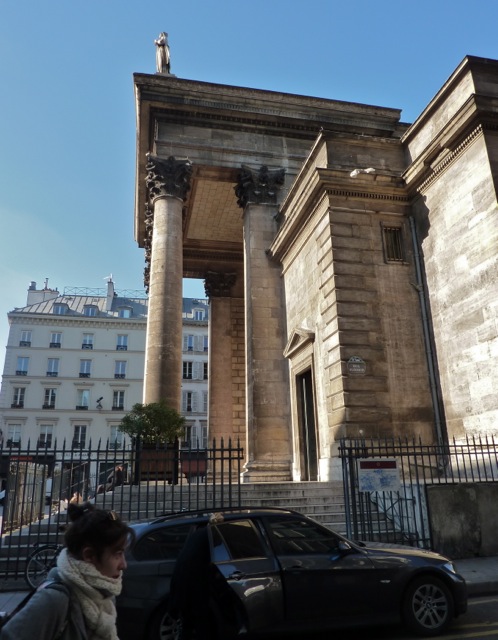 The interior of the church is worth a quick look. Instead of the usual paintings, there are murals painted directly on the walls.
The interior of the church is worth a quick look. Instead of the usual paintings, there are murals painted directly on the walls.
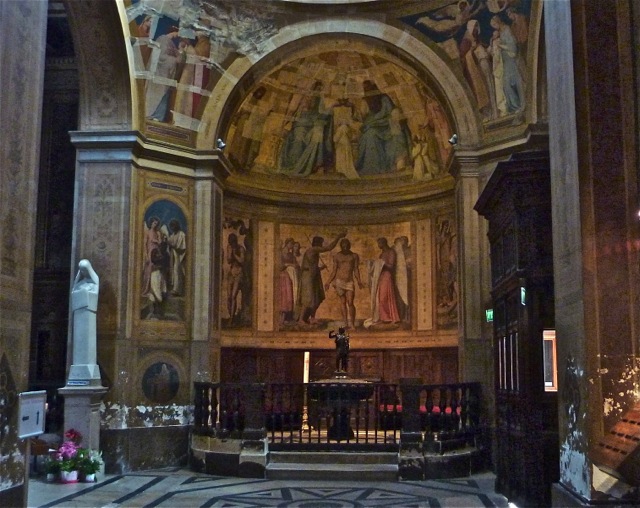 For me the thing that makes Notre Dame de Lorette worth the visit, is the view of the church nestled below the hill of Montmartre with Sacre Coeur looming above.
For me the thing that makes Notre Dame de Lorette worth the visit, is the view of the church nestled below the hill of Montmartre with Sacre Coeur looming above.
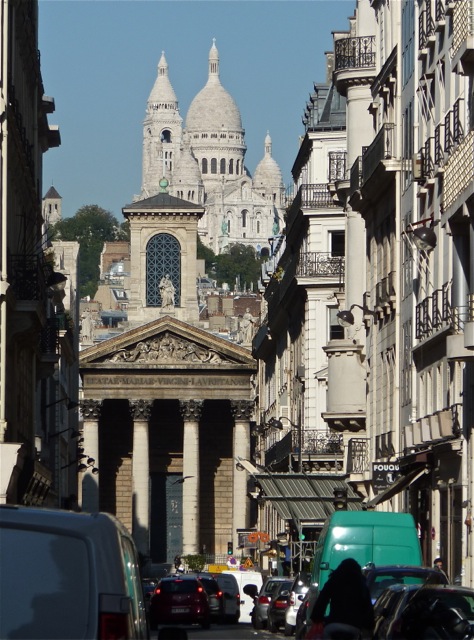 This is a sight that makes the heart leap up, day or night.
This is a sight that makes the heart leap up, day or night.
Lazarist Mission Chapel of St. Vincent de Paul and Church of St. Catherine of the Miraculous Medal. These two churches are rarely visited by tourists although St. Catherine Laboure is a goal for many pilgrims. They are located not far from the Bon Marche and the Sevres Babylon metro stop and within a block of so of each other. Without the address and firm commitment to find them they are easy to overlook.
The Lazarist missionary brotherhood of priests was founded to do mission service in poor and rural areas throughout the world. St. Vincent de Paul created the order in 1624. He was canonized for his work among the poor by Pope Clement XII in 1737. The chapel of the Lazarist Mission is at 95 Rue de Sevres and has an unprepossessing entrance. It is noteworthy for containing the once incorruptible corpse of St. Vincent de Paul.
Perhaps the body was once intact and incorruptible but it is now bones, encased within a very lifelike wax effigy.
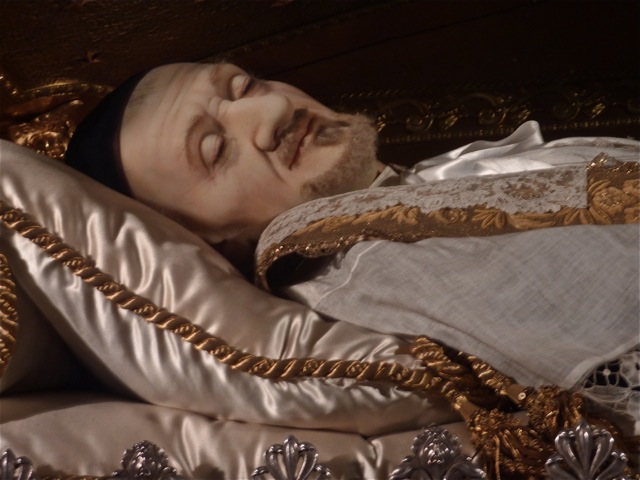 The nave of the church is ornate; it focuses on the loft above the altar that contains the effigy of St. Vincent. This is reached by steep winding stairs at each side of the altar.
The nave of the church is ornate; it focuses on the loft above the altar that contains the effigy of St. Vincent. This is reached by steep winding stairs at each side of the altar.
Along the sides of the chapel the story of St. Vincent’s work is told in a series of stained glass windows. A visit takes only a few moments and is an interesting spot if you are in the area.
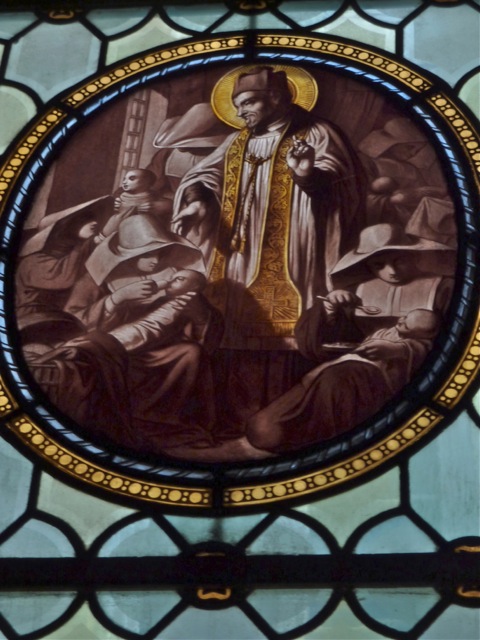 Just around the corner at 140 Rue de Bac is the chapel of Saint Catherine of the Miraculous Medal which is thronged with pilgrims coming to view her incorruptible body and purchase medals that are said to cure the sick. The outer entry is easily overlooked.
Just around the corner at 140 Rue de Bac is the chapel of Saint Catherine of the Miraculous Medal which is thronged with pilgrims coming to view her incorruptible body and purchase medals that are said to cure the sick. The outer entry is easily overlooked.
Once inside the outer door, you are in a long inner courtyard.
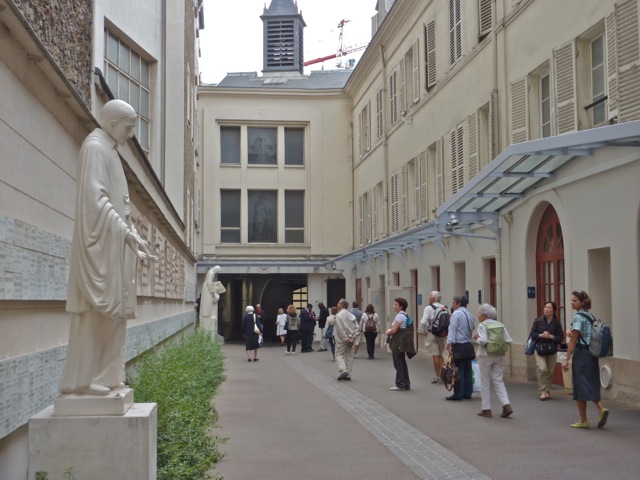 Catherine Laboure was a nursing sister of the Order of Sisters of Charity of St. Vincent de Paul. In 1830 she experienced a vision of the Virgin instructing her to have a medal designed that would serve as a token of grace for the faithful. The design was detailed to her in the vision and after an investigation by the church as to Catherine’s character and sincerity, the medal was struck in 1832 and has been sought after by those suffering illness since that time. She lived out her life as a nursing sister and her association with the Miraculous Medal was not widely known until her later beatification. She was canonized in 1947.
Catherine Laboure was a nursing sister of the Order of Sisters of Charity of St. Vincent de Paul. In 1830 she experienced a vision of the Virgin instructing her to have a medal designed that would serve as a token of grace for the faithful. The design was detailed to her in the vision and after an investigation by the church as to Catherine’s character and sincerity, the medal was struck in 1832 and has been sought after by those suffering illness since that time. She lived out her life as a nursing sister and her association with the Miraculous Medal was not widely known until her later beatification. She was canonized in 1947.
There are shops on the right of the corridor where Miraculous Medals can be purchased. There are many sizes and types but many are easily affordable. I was able to purchase 2 tiny blue enameled medals with rings to put on a chain or charm bracelet for one Euro. Plain medals like these were even cheaper.
Along the corridor there are plaques of thanksgiving for cures that have occurred as a result of the Miraculous Medal. I have visited the chapel itself twice and each time, there were many worshippers and services were proceeding so that I could not easily go to the front to observe the display of the incorruptible body of the saint. Her casket is in front to the left in this picture.
I have visited the chapel itself twice and each time, there were many worshippers and services were proceeding so that I could not easily go to the front to observe the display of the incorruptible body of the saint. Her casket is in front to the left in this picture.
St. Etienne du Mont. St. Etienne du Mont is not off the beaten track; it is just down the street from the Pantheon but many people are not aware that this is the site where Owen Wilson in Woody Allen’s Midnight in Paris waited for his midnight ride to the past.
Walking up towards the Pantheon from the Luxembourg Gardens, the church stands back about a block and to the left.
The famous steps where Gill was picked up by the car from the past are around to the left.
And who knows, maybe if you wait there until Midnight you will hear the bells
and be able to catch your ride with Scott Fitzgerald, T.S. Eliot and Hemingway. Woody Allen was right; Paris is most beautiful in the rain.
We never did catch a ride, so we settled on a drink at the bar on the left in that picture. During the summer, this is a terrace on this romantic old street, but on a rainy night in November, the terrace was wrapped up.
St. Etienne Du Mont is a gorgeous church and well worth a quick visit during daylight hours.
The church was built on a spot occupied by an Abbey devoted to and containing the relics of St. Genevieve. It was enlarged and renamed St. Etienne in 1222 and various enlargements and additions were created over the years until the 17th century. The most noteworthy architectural feature is the magnificent pulpit and rood screen of carved stone.
The church is said to house the relics of St. Genevieve and in 1997 Pope John Paul II worshipped at her casket. Since her bones were thrown into the sewers of Paris during the revolution when the holy statues were destroyed (since replaced) and the church itself turned into a ‘Temple of Filial Piety”, I am not quite clear on what is in these reliquaries and casket.
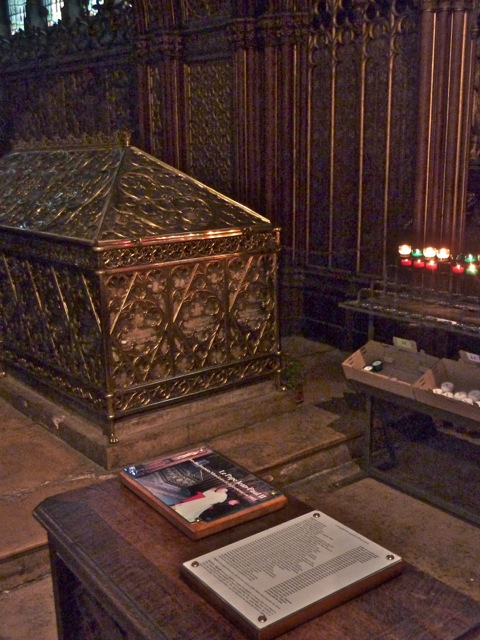 Notre Dame de Compassion. This little chapel once stood where the convention center at Porte Maillot was built. In 1964, Paris authorities disassembled and then reconstructed the chapel a few hundred meters away on a small patch of land overlooking the peripherique — the major ring road that circles Paris — in order to take the land for the convention center.
Notre Dame de Compassion. This little chapel once stood where the convention center at Porte Maillot was built. In 1964, Paris authorities disassembled and then reconstructed the chapel a few hundred meters away on a small patch of land overlooking the peripherique — the major ring road that circles Paris — in order to take the land for the convention center.
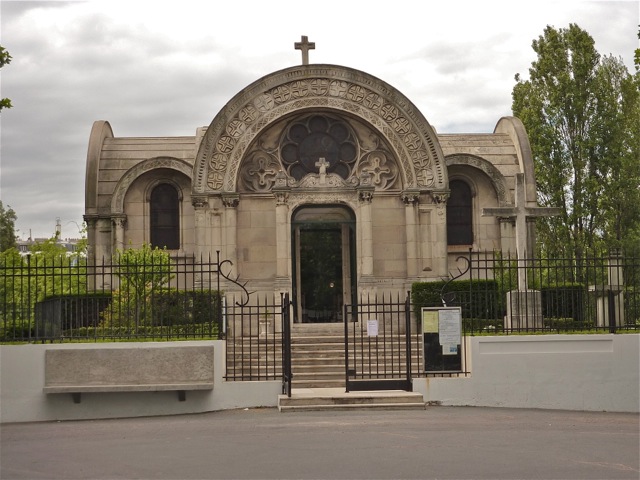 It is a charming spot but its location pretty much guarantees few visitors. We had wanted to see it but it was locked up when we visited, so we took advantage of a notice of a free saxaphone concert in Pariscope to get a chance to look inside.
It is a charming spot but its location pretty much guarantees few visitors. We had wanted to see it but it was locked up when we visited, so we took advantage of a notice of a free saxaphone concert in Pariscope to get a chance to look inside.
The metro stop is Porte Maillot and the exit places one on the axis that links the Grande Arche at La Defense with the Arc de Triomphe. Both are highly visible when one exits the metro here.
 The Chapel is perched right on the edge of the ditch that contains the highway of the peripherique; the railing in this photo separates the small grounds of the chapel from the highway.
The Chapel is perched right on the edge of the ditch that contains the highway of the peripherique; the railing in this photo separates the small grounds of the chapel from the highway.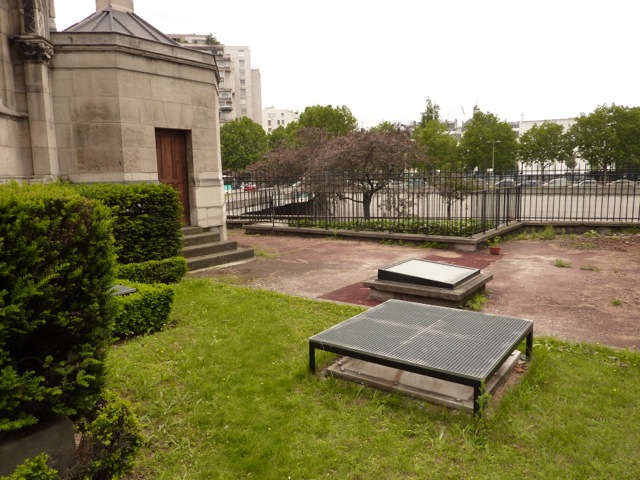
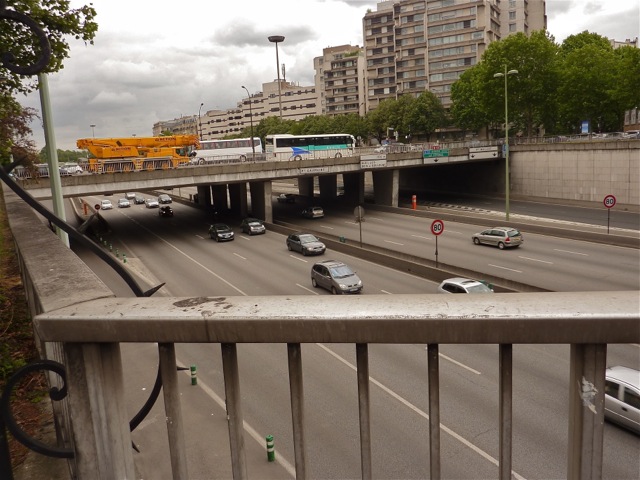 We had hoped to enjoy the concert in the charming sanctuary, but alas ended up in the ugly basement. This is a common occurrence with church concerts. Those at the Madeleine are held in the sanctuary but we have ended up in a side room at the American Cathedral, and in basement rooms in other churches.
We had hoped to enjoy the concert in the charming sanctuary, but alas ended up in the ugly basement. This is a common occurrence with church concerts. Those at the Madeleine are held in the sanctuary but we have ended up in a side room at the American Cathedral, and in basement rooms in other churches.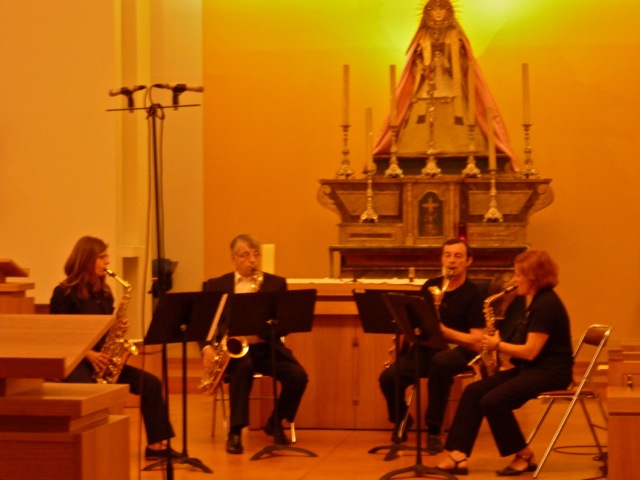
Before the concert began we did have a chance to visit the chapel itself. 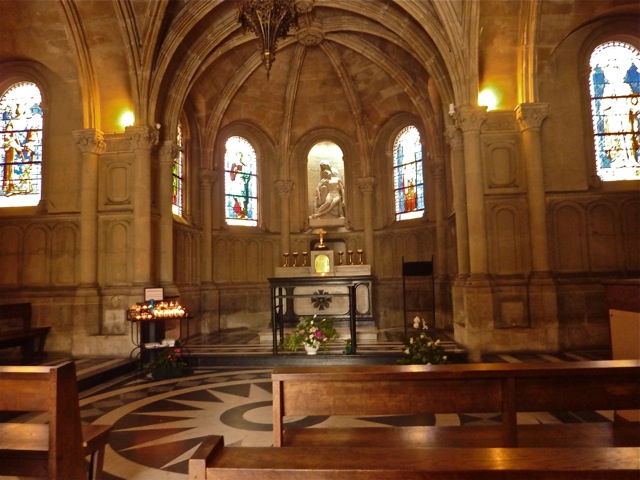 The Chapel was built in 1842 to commemorate the death of the son of the last King of the French, Louis-Philippe d’Orléans who was installed as a constitutional monarch after the abdication of Charles X in 1830. His son Ferdinand-Philippe d’Orleans died in 1842 at Porte Maillot in a carriage accident as he was driving to meet his parents in Neuilly before heading to the field to resume command of his regiment. He was carried injured to a nearby shop where he died. He was 32 years old. The Chapel was erected at the spot where he died.
The Chapel was built in 1842 to commemorate the death of the son of the last King of the French, Louis-Philippe d’Orléans who was installed as a constitutional monarch after the abdication of Charles X in 1830. His son Ferdinand-Philippe d’Orleans died in 1842 at Porte Maillot in a carriage accident as he was driving to meet his parents in Neuilly before heading to the field to resume command of his regiment. He was carried injured to a nearby shop where he died. He was 32 years old. The Chapel was erected at the spot where he died.
The building was moved to its present perch above the peripherique in 1964 when the Porte Maillot convention center was built; the center is visible from the new location. A statue of the fallen prince is featured in the chapel.
A statue of the fallen prince is featured in the chapel.
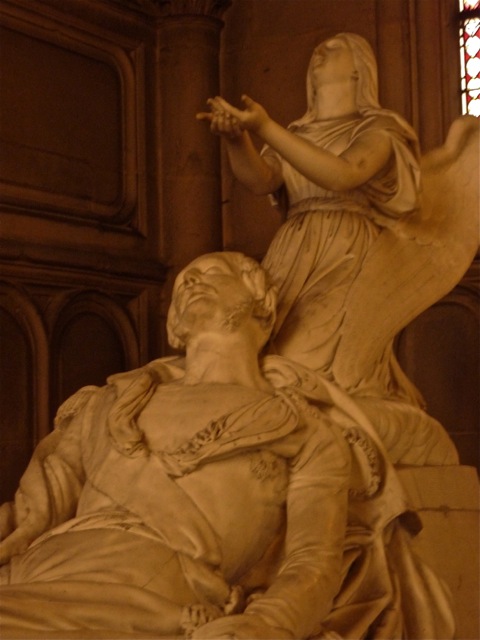 The loss of the crown prince who was exceedingly popular throughout France ended the monarchy as there was little support for its continuation after his death.
The loss of the crown prince who was exceedingly popular throughout France ended the monarchy as there was little support for its continuation after his death.

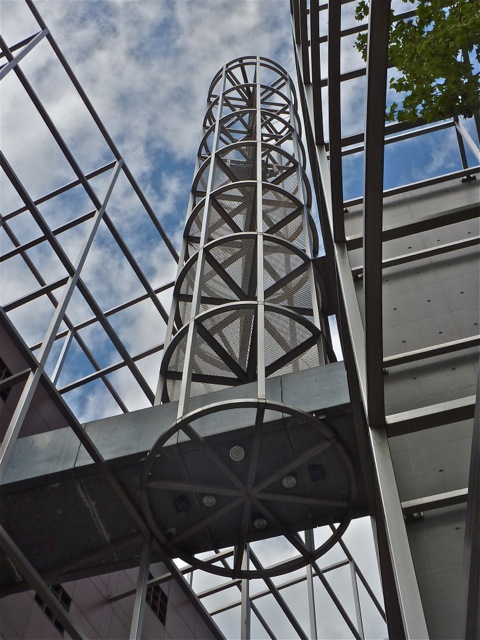
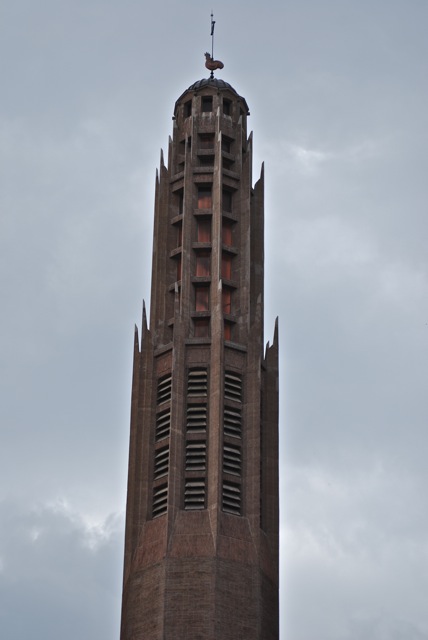
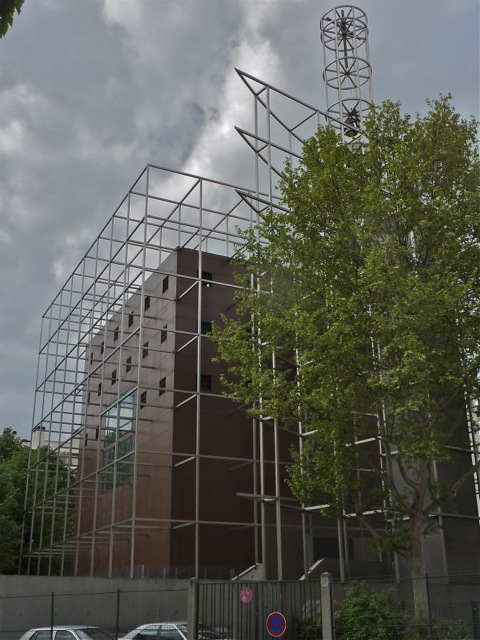
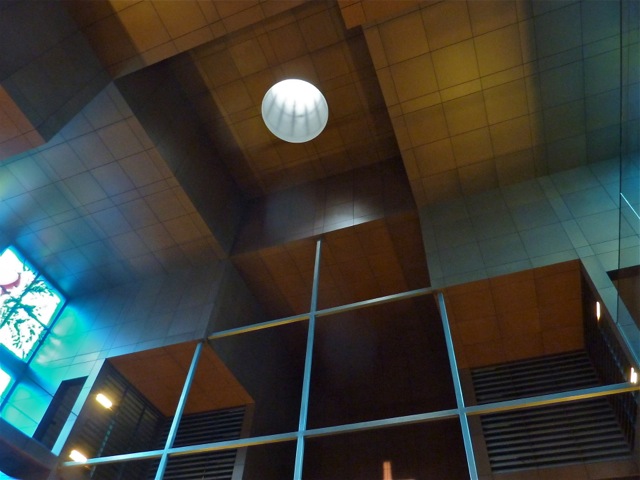
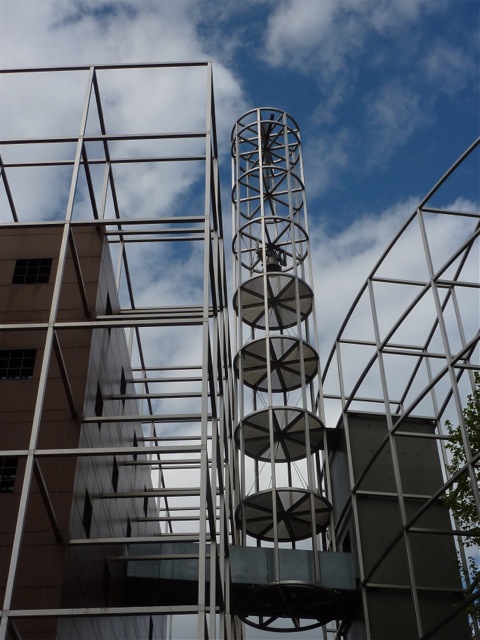

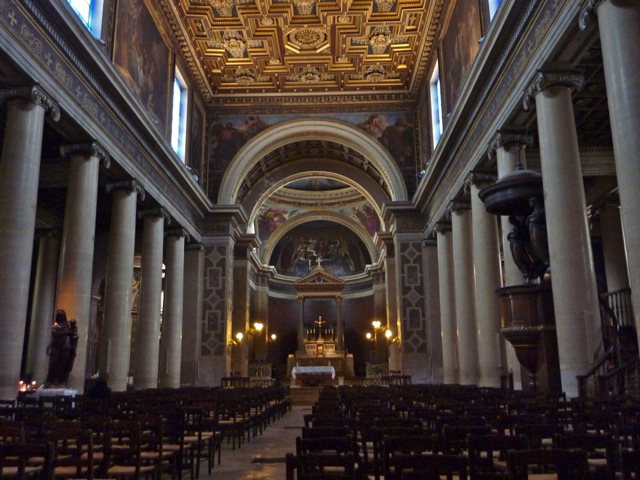
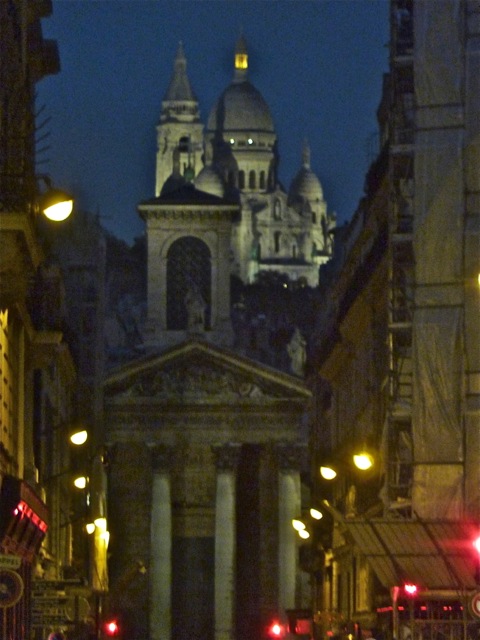
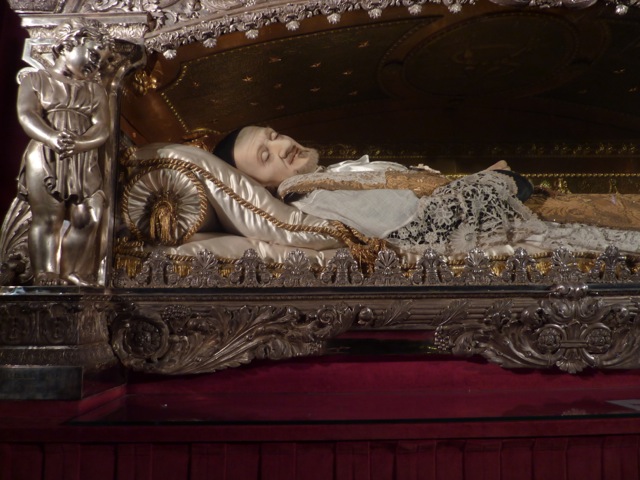
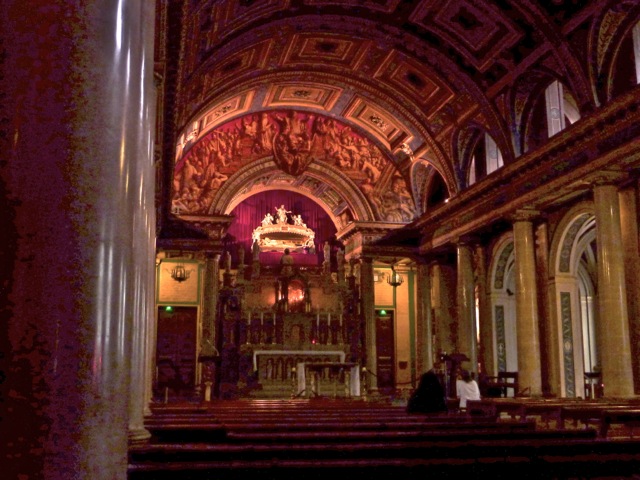
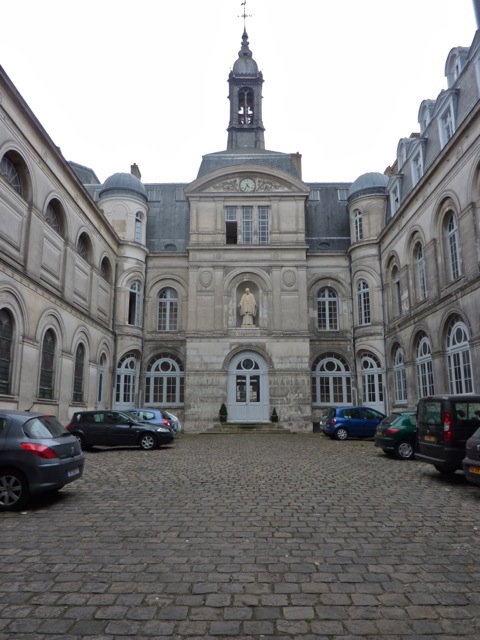


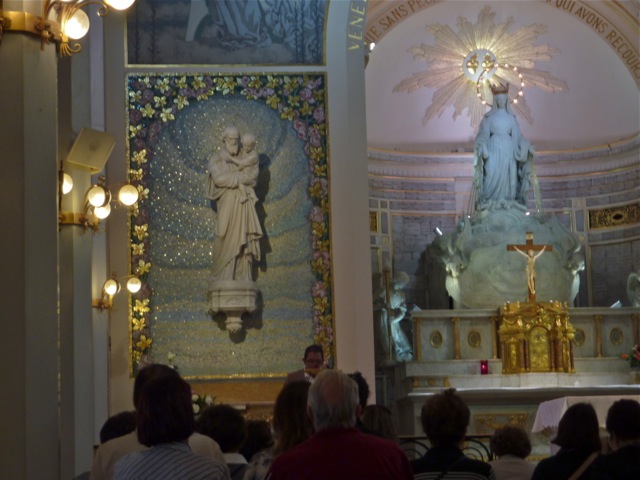
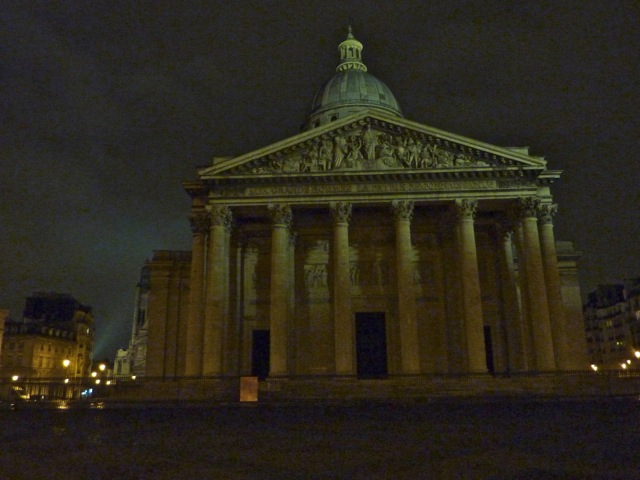
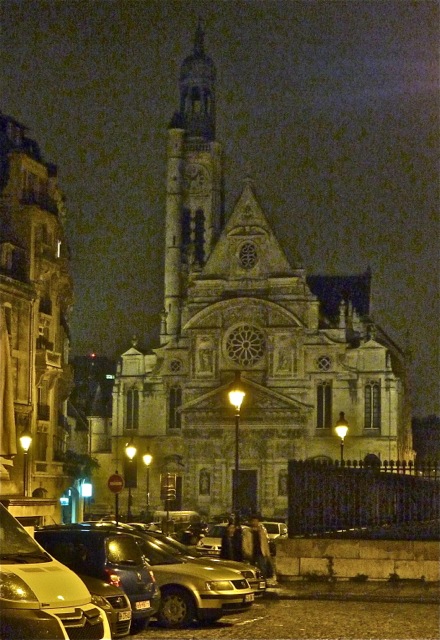
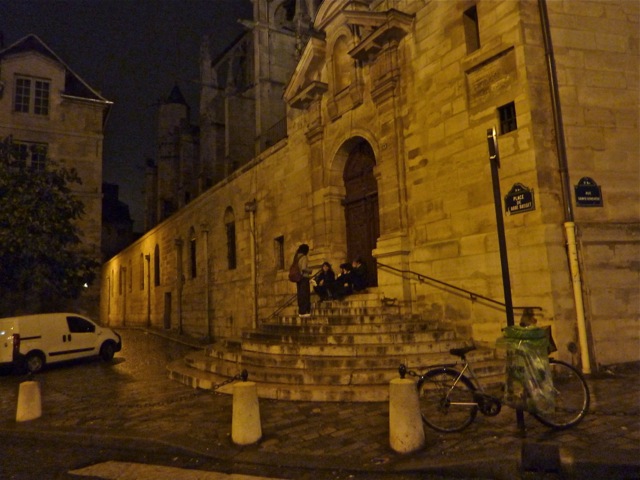
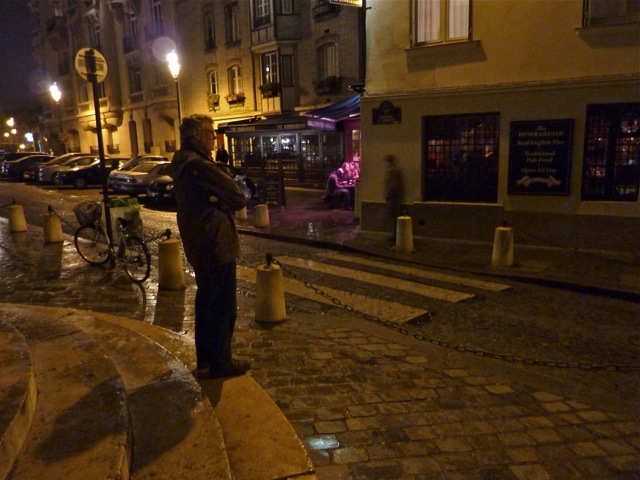
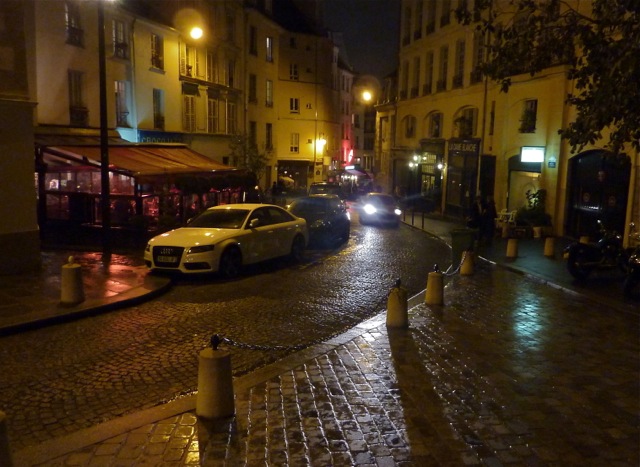
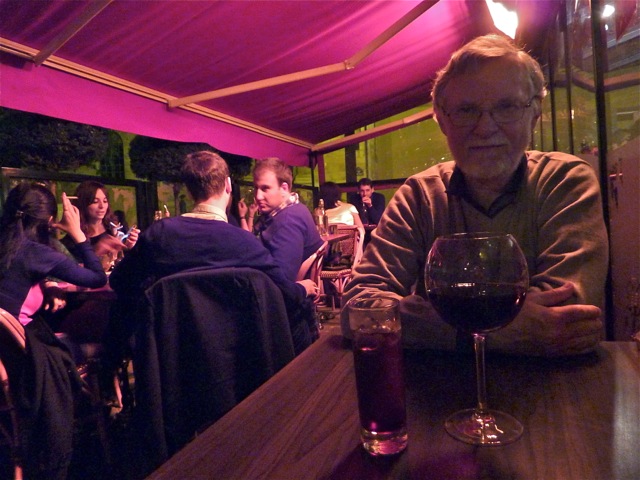
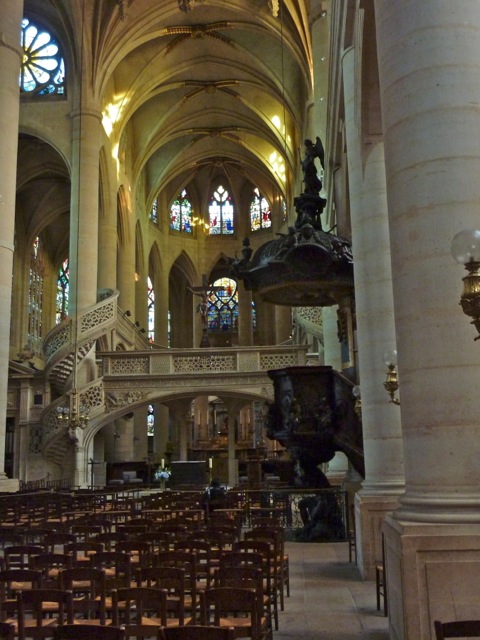
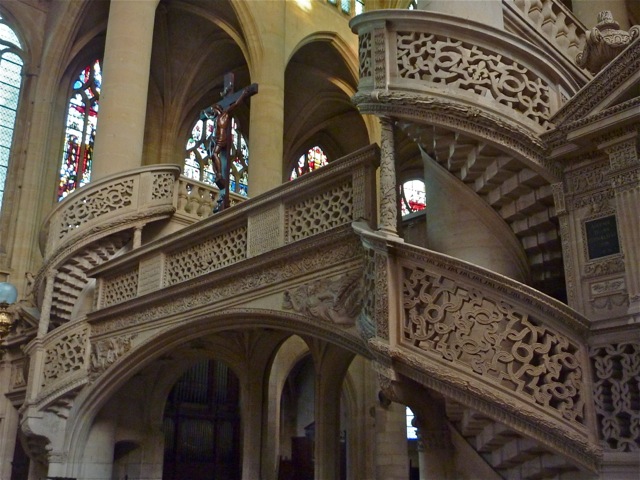

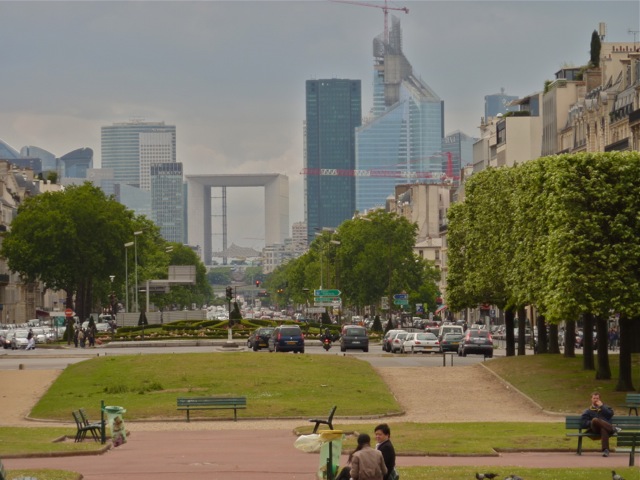
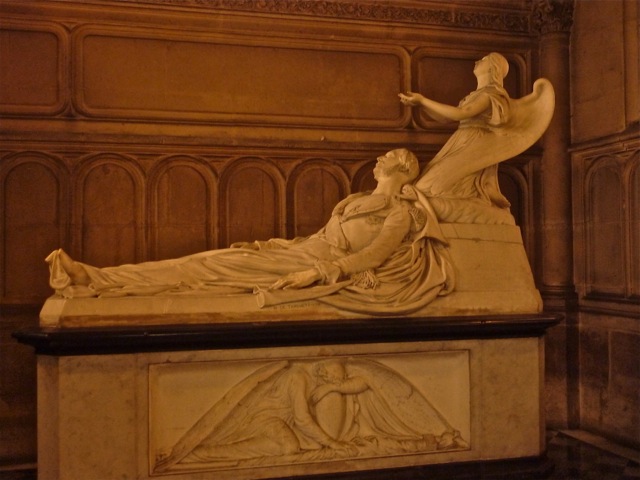

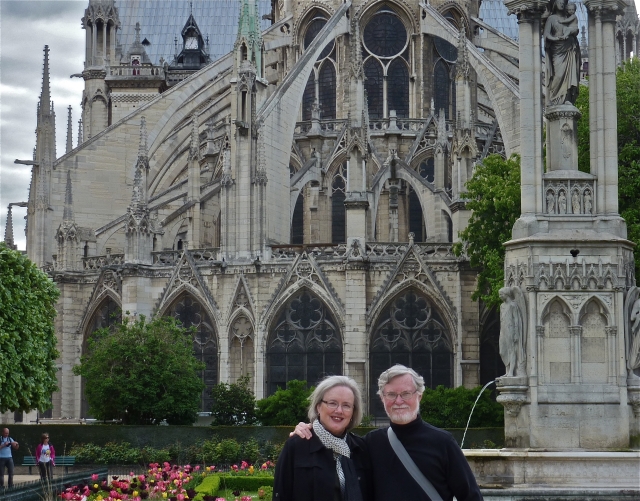
+1 to rat gargoyles.
Those are mice Jon — Sarah Bernhardt’s mice. (although they always looked like rats to me too) I’ll show you next time we are in Paris.
enjoyed looking at your photos. we are planning to go to paris next april and i am already starting to research but as i have never been there before where would you recommend to stay? i would like to see the moulin rouge, the tower, etc the typical tourist sights, but would like to stay where i can just walk out and “everything is there” to a point.
for a first Paris visit I would stay in the 4th 5th or 6th (Marais, Latin Quarter, St. Germaine) These are well situated for walking to many key sites like Notre Dame, the Louvre, d’Orsay etc and are well served by the metro. The Eiffel Tower and Montmartre are both rather isolated from the center, so you take a special trip to get to those. I love to walk along the river at night — it is beautiful, especially Notre Dame — so like to stay near the river, although now that we have been so many times, we usually end up on the fringes in less toursty areas. But for a first trip make it easy on yourself to see the main sights. No idea of your budget, but a hotel we love is Henry IV Rive Gauche. If you are there for a week or so consider getting an apartment.
I love your blog. Thanks for suggesting it on TripAdvisor (More Catholic Churches to Visit in Paris). Thank you.
Beautiful pictures and very interesting information!!
Thanks. I love to use other people’s blogs when I am planning and so hope this helps you and others planning their Paris visits.
St. Sulpice in the 6th? Didn’t go because it was where The DaVinci Code (yucky movie compared to the book) was filmed, but because they’ve amazingly only had 15 organists in 414 years! And the pipe organ (debatably) is the most famous in Europe. Was there for Sunday Mass then a 25-minute post-Mass concerto by Daniel Roth. A highlight of our trip. Very emotional & moving.
Dear Janet
Please can you forward me your email address
You can reach me through the messaging system of Trip Advisor Janettravels44
Great blog, Janet. It reminds me of a couple of trips I’ve done including one of the churches of Paris in 2011. In a church I picked up a booklet published by partimione religieux de Paris and it was this that I used to create a ‘tour’ of the churches of the city. To anyone who shares my passion for church architecture I would also recommend visiting London and Venice. I’ve just returned from amazing days navigating my way through the medieval labyrinth of Venice in search of its ecclesiastical riches.
We haven’t been to VEnice in 35 years — makes me want to revisit. Rome is another great city for churches. Happy travels.
j
Interesting blog, it reminds me of St. Nicolas du Chardonnet church in Paris, it is one of a few churches in the secular Paris that regularly and exclusively performs the traditional Latin-rite Mass.
I tried to write a blog about it, hope you also like it in https://stenote.blogspot.com/2018/09/paris-at-st-nicolas-du-chardonnet.html